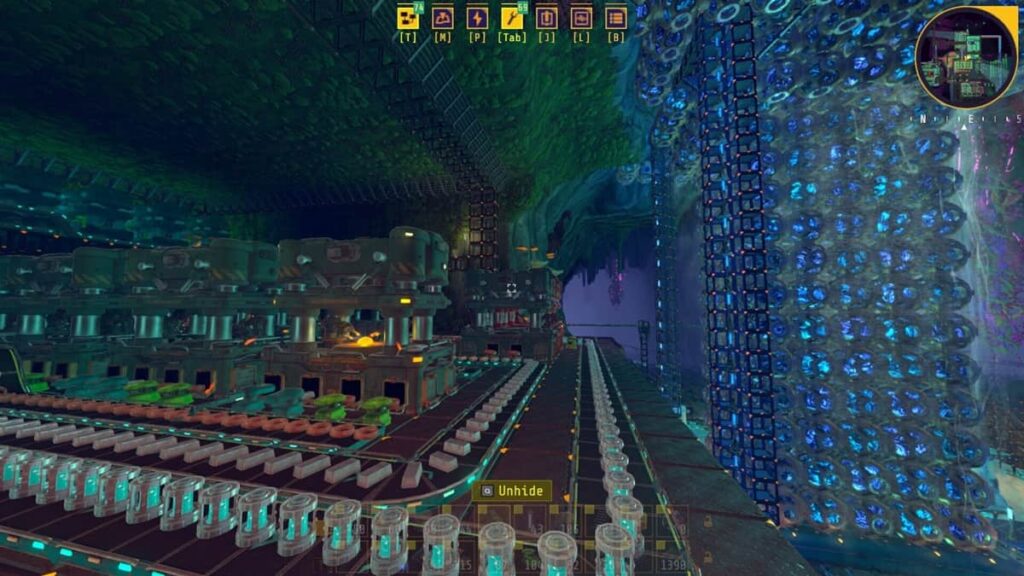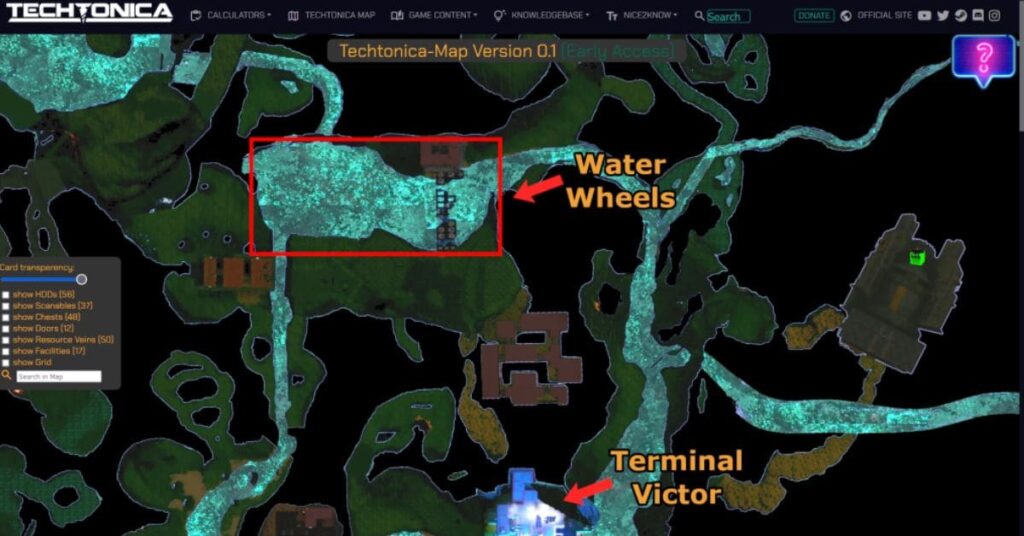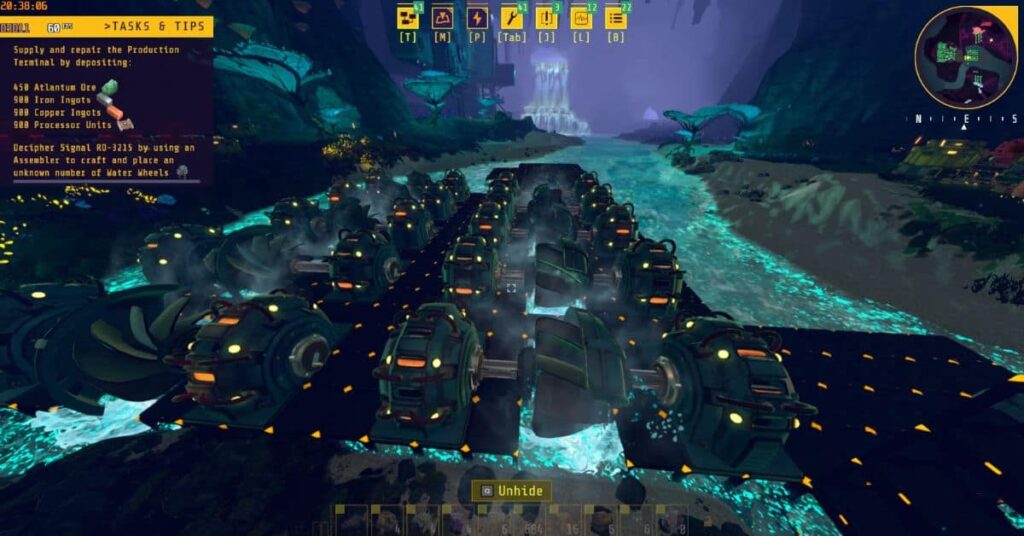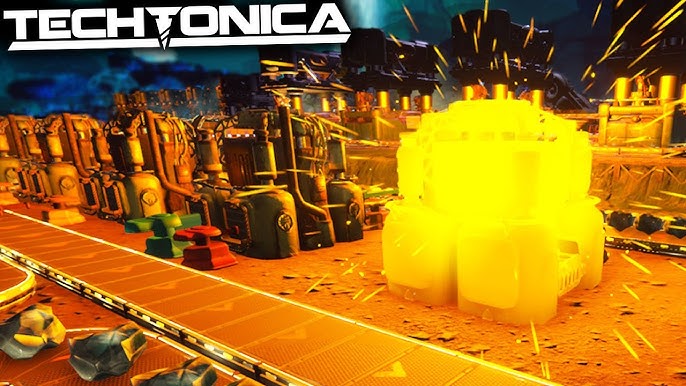
Techtonica Water Wheel – The Power of the Game!
The water wheel can also present some challenges initially, but with the right knowledge, you’ll become adept at harnessing its abilities to generate extra energy.
In this Techtonica Water Wheel Guide, I will provide detailed instructions on how to create and optimize the use of the Water Wheel tool in Techtonica. Let’s make sure to explore the game on Steam for an immersive experience.
Table of Contents:
Techtonica Water Wheel Tutorial – Crafting and Optimization Guide!
The water wheel in Techtonica serves as a crucial tool for energy generation. This tutorial will guide you through the crafting process and offer optimization tips to maximize its efficiency.

1. How to Get?
To obtain the water wheel blueprint in Techtonica, follow these steps:
- Begin by heading to the river within the game environment.
- Thoroughly explore the riverbank, keeping an eye out for fragments of the water wheel.
- Identify and examine the water wheel fragments to confirm their relevance.
- Initiate the scanning process on the identified fragments to unlock the comprehensive water wheel blueprint.
This step-by-step guide ensures you acquire the essential blueprint, laying the foundation for successful water wheel crafting and optimal energy generation in Tectonic.
2. How to Use?
The functionality of the water wheel lies in its ability to generate electricity when positioned in the water. To capitalize on this energy, a vital step is connecting the water wheel to a generator.

However, achieving optimal energy generation requires careful consideration of the spatial relationship between the water wheel and the generator.
- Generator Connection: After situating the water wheel in a water source, connect it to a generator. This establishes the link necessary for transforming the water wheel’s rotation into electrical power.
- Proximity Matters: Pay close attention to the placement of the generator in relation to the water wheel. If the generator is too distant, it may disrupt the flow of energy, diminishing overall efficiency.
- Efficient Flow Design: Ensure there is a well-thought-out design that allows for a smooth flow of energy from the water wheel to the connected generator. This may involve positioning the generator in close proximity to the wheel.
- Strategic Placement: Choose a location for the generator that complements the water wheel’s placement. This strategic positioning minimizes energy loss and optimizes the overall electricity generation process.
By taking these considerations into account, you enhance the synergy between the water wheel and generator, guaranteeing an efficient and effective energy generation system in Tectonic.
Read Also: Vlineperol – Unlocking the Power of the Ultimate Solution!
Unlocking the Exciting Tecnical Game – Step-by-Step Guide!
- Exploration Near Rivers: Begin your search for the water wheel blueprint by exploring areas adjacent to rivers within the game. These locations often harbor the remnants needed to unlock the blueprint.
- Detailed Observation: Exercise keen observation as you explore. Water wheel fragments may not be immediately apparent, so examine the environment carefully for any signs or remnants.
- Identifying Remains: Once you’ve identified potential water wheel fragments, approach them to confirm their relevance. These remnants hold the key to unlocking the blueprint.
- Engage in Scanning: Initiate the scanning process by interacting with the discovered remnants. This step is critical as it transforms the identified fragments into the comprehensive blueprint required for crafting the water wheel.
- Thorough Exploration Tips: Don’t rush the exploration process. Take the time to thoroughly investigate the areas near rivers, ensuring you cover the surroundings comprehensively.

By following this detailed guide, you’ll increase your chances of successfully unlocking the water wheel blueprint in Techtonica, paving the way for efficient energy generation in the game.
What is the Ratio of a Water Wheel to the Generator in Techtonica? – Optimize Efficiency!
In Tectonic, achieving an optimal ratio between the water wheel and the generator is crucial for efficient energy production. The ideal ratio depends on various factors, including the specific game mechanics and design considerations.
It is recommended to experiment with different setups to find the most effective configuration for your particular in-game environment.
- Proximity: Ensure that the generator is placed close enough to the water wheel to maximize the efficiency of energy transfer.
- Flow Dynamics: Take into account the flow dynamics of the water source. A well-designed system that allows for a smooth and consistent flow of water to the wheel can enhance overall energy generation.
- Output Capacity: Adjust the ratio based on the desired output capacity. Balancing the size and power of the water wheel with the capacity of the generator is essential for sustained and reliable energy production.
- Terrain and Obstacles: Account for the terrain and any potential obstacles that might affect the flow of water to the wheel. An unobstructed path ensures optimal performance.
It’s recommended to iteratively test and adjust the ratio, considering these factors, to fine-tune the water wheel and generator setup for the best results in Tectonic. Experimentation will help you find the most efficient and effective configuration for your specific in-game circumstances.
Read Also: Ready4player Senior Game Designer – Crafting Gaming’s Experiences Beyond Imagination!
Determining the Tool Power Used in the Game – Complete Information!
Delving into the intricacies of tool power within the game requires a multifaceted approach. This comprehensive guide aims to equip players with the knowledge needed to calculate and grasp the nuances of tool power:

- Efficiency Ratings Deconstructed: Uncover the significance of efficiency ratings by closely examining in-game descriptions and tool menus. These ratings serve as key indicators of a tool’s power and effectiveness.
- Analyzing Energy Consumption: Navigate the realm of tool power by scrutinizing each tool’s energy consumption rate. This critical analysis unveils insights into the energy requirements that drive a tool’s performance.
- Unlocking the Potential of Upgrades: Explore the transformative realm of tool upgrades, where enhancements can amplify a tool’s power, making it more adept at tackling various in-game challenges.
- Unravelling Tool-Specific Attributes: Consider the distinctive attributes of each tool that contribute to its power. Whether it’s special features, durability, or unique capabilities, understanding these aspects enriches the comprehension of tool strength.
- Mastering Game Mechanics: Gain proficiency in the game’s mechanics related to tool power. Some games provide specific metrics or numerical values that quantitatively express the strength of various tools.
- Decoding Resource Requirements: Decipher the resource demands associated with crafting or maintaining a tool. Tools with higher resource requirements often correlate with increased power or enhanced capabilities.
- Community Insights and Experience: Harness the collective wisdom of the player community by considering personal experiences and feedback. Community discussions and forums are valuable resources for garnering insights into the practical effectiveness of different tools.
By navigating through these dimensions, players will be well-equipped to make informed decisions regarding tool selection, upgrades, and strategic gameplay, unravelling the intricate web of tool power within the game.
Frequently Asked Questions:
1. How do I interpret performance ratings for tools?
The performance rating in the tool description indicates the effectiveness of a tool. A higher rating usually indicates more power and efficiency.
2. What factors should be considered when upgrading tools?
When upgrading tools, consider enhancements that suit your gameplay style. Focus on attributes that improve performance and effectiveness in specific tasks.
3. Can energy consumption rate affect gameplay?
Yes, it is very important to understand the rate of energy consumption. Higher rates can lead to faster degradation, affecting the overall utility of the tool.
4. Are community insights reliable for understanding tool power?
Community insights provide valuable insights. Forums and discussions can offer practical tips and real-world experiences with various tools.
5. How do tool-specific attributes contribute to power?
Tool-specific characteristics, such as special features or durability, directly affect a tool’s strength and performance in various playing scenarios.
Conclusion:
Master tool power and ranking, energy usage, upgrades, and complete game information for peak gameplay. Community insights power your strategy. Level up your gaming with informed decisions.
You May Also Like

Duolingo Promo Codes – Unlocking Language Learning Adventures!
December 7, 2023
Record Of The Mightiest Lord Chapter 1 – Let’s Explore!
November 13, 2023
